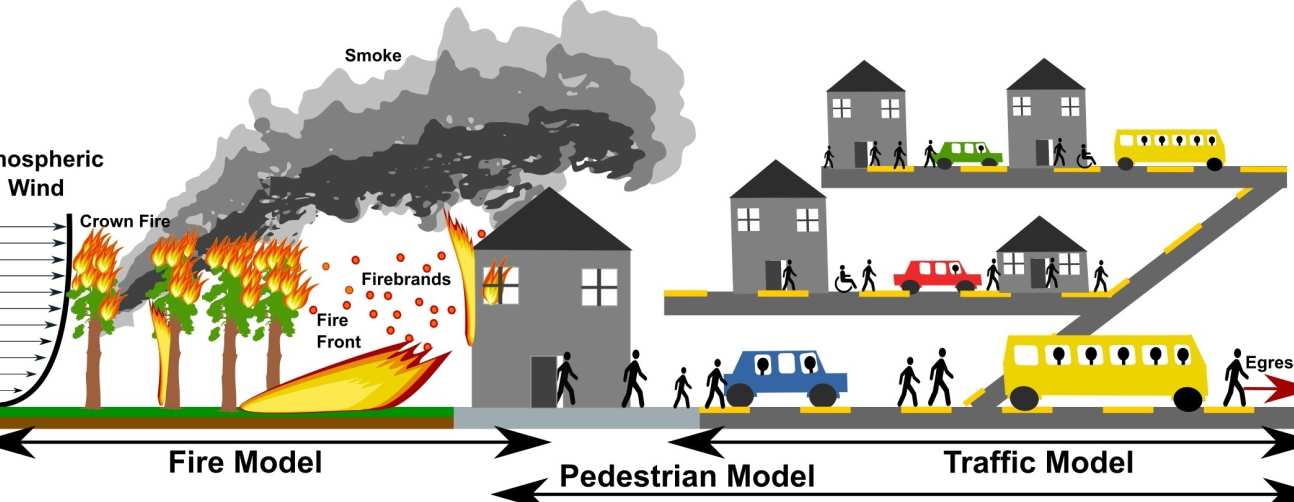Project title: Wildfire Modelling in the Wild-Urban Interface to Inform Evacuation Strategies
Supervisor: Professor Guillermo Rein
Wildfires are an issue that impact society globally, with the number of people displaced by wildfire evacuations annually in the order of millions. With wildfires increasing in frequency and the developing of communities bordering forestland (WUI), this is an issue that’s anticipated to increase in significance. Computational models of wildfire spread, pedestrian evacuation and vehicle evacuation have been developed to understand the phenomena involved in a WUI incident. It’s essential that the fire model is robust, reliable and fast to inform evacuation models and strategies. FARSITE is an example of a widely used and reliable numerical wildfire spread model.
This project implements FARSITE and evacuation data to develop a mode of data output from the models known as a trigger-buffer perimeter. A trigger buffer perimeter defines a perimeter around a WUI community, by which for the population to safely evacuate before the fire reaches the community, the evacuation must commence as the wildfire intersects the trigger buffer. This was used to evaluate a previous evacuation incident, the 2011 Swinley, Berkshire wildfire, and it can be used to develop a better evacuation strategy.
